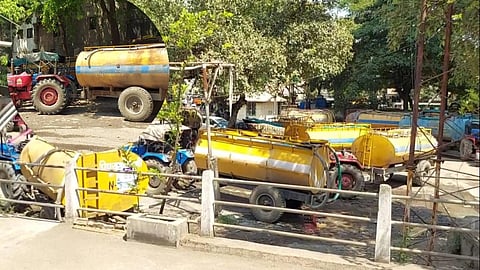Drought Looms in Marathwada: Water Supply to 57 Villages and 11 Hamlets Now Dependent on 83 Tankers
Breakdown of Affected Areas
In Chhatrapati Sambhajinagar, water is currently being supplied by 12 tankers to 8 villages and 5 hamlets. The taluka-wise distribution is as follows:
Phulambri: 1 village receives 2 tankers
Paithan: 11 villages receive 11 tankers
Vaijapur: 15 villages and 1 hamlet receive 16 tankers
Gangapur: 7 villages receive 10 tankers
In Nanded district, one village each in Bhokar and Mahur talukas is being served by water tankers.
The crisis is equally concerning in Jalna district, where 30 tankers are deployed to serve 13 villages and 5 urban wards:
Jalna Taluka: 3 villages and 2 wards are receiving water from 12 tankers
Badnapur Taluka: 6 villages and 3 wards are receiving water from 12 tankers
Ambad Taluka: 4 villages are being served by 6 tankers
A Repeated Crisis, A Repeated Response
This year’s water crisis mirrors the pattern of previous years, highlighting not just climatic challenges, but also a lack of long-term water management planning by the government. The continued dependence on tanker-based water supply points to reactive crisis management, rather than proactive drought mitigation strategies.
Every summer, villages across Marathwada face the same reality: water scarcity, logistical chaos surrounding tanker operations, and little to no sustainable resolution in sight.
Call for Sustainable Solutions
Experts and local residents alike are urging the government to move beyond short-term tanker solutions and invest in long-term water management initiatives, including:
Water conservation
Watershed development
Sustainable rural water supply systems
The recurring drought is not just a climate-induced emergency—it is a symptom of poor planning and inadequate policy execution. Immediate and bold action is needed to free Marathwada from this annual cycle of thirst and ensure water security for the region’s rural population.

